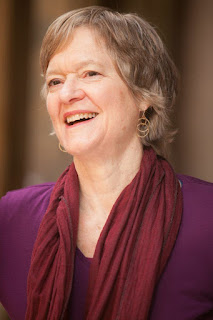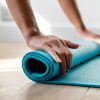The teams of muscles that support and move your hips are awesome. Even if you’re not an anatomy geek, they are worth getting to know. You have the flexors in the front (with the iliopsoas as the team leader) which bring your leg forward to take a step. Their counterpart is the extensors in the back—gluteus maximus and hamstrings—the push-off muscles for running. We also have teams that rotate the hip joint external rotators (piriformis being the midget but strong team leader here) and the internal rotators, which I’ll talk about below. Another team is the adductors on the inner thighs, a group of five that stabilize the inner thighs, pulling toward the midline.
Because of their attachment on the bones above and below, these muscles have a variety of actions, depending on what part of the body is stable. If you put all your weight on one leg, the abductors will move the other leg to the side, and potentially also rotate it a bit. They’ll also be stabilizing your standing leg! Because the gluteus medius has such a wide attachment on the pelvic crest, it can either rotate the thigh externally or internally, as well as abduct it—the multitasker.
4. Bent Knee Outer Hip Stretch: Be sure to keep the shoulders and pelvis flat on the floor, and adjust your distance from the wall as needed.
I hope this has piqued your interest in your hip muscles! You can appreciate the contribution of these multitaskers in all standing poses, but especially in any balance pose, such as Vrksasana (Tree Pose), Trikonasana (Triangle Pose), and Ardha Chandrasana (Half-Moon Pose).
For more on the hip muscles, see my book Anatomy and Yoga: A Guide for Teachers and Students, available online and in bookstores. For information on my online weekly classes, see here.
Ellen Saltonstall (ERYT-500, C-IAYT, YACEP) is an alignment-based yoga instructor and body therapist based in New York City with over 40 years of experience. Her background includes modern dance, a massage therapy practice, Iyengar Yoga and Anusara Yoga. She was certified in Anusara Yoga in 2001, then became a Subject Matter Specialist in anatomy and therapeutics. In addition to yoga, she teaches Bodymind Ballwork, a method of bodywork using rubber balls to facilitate tension release. Her published books include Yoga for Arthritis (2008), Yoga for Osteoporosis (2010), Anatomy and Yoga (2016), and The Bodymind Ballwork Method (2018). She offers yoga therapy webinars through YogaOnlineU.com, and she teaches nationally and internationally with a specialty in anatomy and therapeutics. She is known for her clarity, depth of knowledge, and enthusiasm in encouraging students of all levels to find freedom and joy through yoga. More information here.
Subscribe to Yoga for Healthy Aging by Email ° Follow Yoga for Healthy Aging on Facebook ° To order Yoga for Healthy Aging: A Guide to Lifelong Well-Being, go to Amazon, Shambhala, Indie Bound or your local bookstore.









